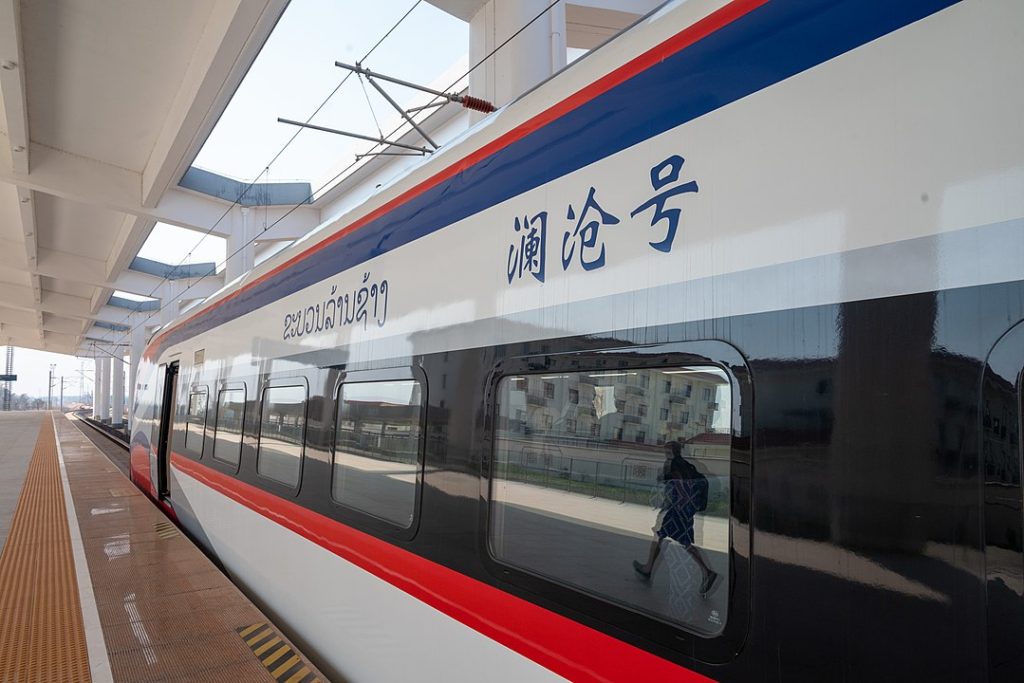China can neither allow Laos to default on huge debts nor let its small neighbor suffer too much.
In the Western vernacular there’s a warning about tails wagging dogs. And the Buddhist adage dictates that when the sage points at the moon, only the fool looks at his finger. The point of both is not to confuse the object for the subject. For years, we’ve been warned that Laos has been ensnared in a Chinese “debt trap.’ What if Laos has equally caught Beijing in a “creditor trap?”
According to the World Bank’s latest estimates, Laos’ national debt has probably surpassed 110 percent of GDP, with more than two-fifths of that owed bilaterally to China. (It accounts for around half of Laos’ external debt.) Others reckon the percentages are actually much higher. And as things stand, Laos’ public debt will remain above the 100-percent-of-GDP mark until 2030, according to a baseline scenario of an IMF report published last month.
China and Laos rarely make these things public, but the IMF reckons known deferrals of debt servicing to China amounted to $220 million in 2020, $450 million in 2021, and $610 million last year. By one estimate, China’s short-term debt relief in the form of deferrals accounted for nearly 8 percent of Laos’ GDP by the end of 2022. Delaying makes sense. It frees up Vientiane’s finances in the short term. Because most of Laos’ debt is in U.S .dollars and the Lao kip has depreciated so badly since early 2022, payment now would be far more costly to the state than if China was paid back in a few years time (when the kip would have presumably rallied).
Beijing might remain conservative. “Given the approach China has taken previously, it may offer short term relief, but only that,” Mariza Cooray, of the Lowy Institute’s Indo-Pacific Development Centre, argued last month. Beijing has moved much quicker to defer debt repayments for Laos compared to for the likes of Sri Lanka and Zambia, Cooray noted. But as with Sri Lanka and Zambia, she added, “China has also so far been unwilling to take a haircut on its debt, despite obvious signs that this will ultimately be necessary and to everyone’s benefit.”
Speaking recently to several economists, however, most were of the opinion that at some point, perhaps in the next year or two, Beijing will have to take a bolder step. That may not be as simple as write-downs or debt forgiveness, although those aren’t beyond doubt. Writing off two or three billion dollars, for instance, would prick China’s overseas credit sheets but it would be a godsend to Laos’ coffers.
Special case
Other debtor nations might cry foul. But unlike Pakistan, say, Laos has miniscule relations with the West, so slightly freeing Vientiane from this debt burden won’t see it suddenly realign with the United States or Western lenders. A majority of Laos’ debt is owed bilaterally to China, whereas most of Pakistan’s external debt is owed to multilateral institutions. That makes Laos a special case.
More likely, though, Beijing will want some form of quid-pro-quo: a stake in Laos’ national assets or a geopolitical favor. It’s worth considering that Laos takes on the annually-rotating chairmanship of the Association of Southeast Asian Nations (ASEAN) in 2024, and Beijing may lean on its geopolitical client to represent its interests. Vientiane, which isn’t overly fussed by how others perceive it, could demand something in return.
In any case, that will once again raise the hackles of those who proclaim Laos is ensnared in a Chinese “debt trap”. But Beijing cannot easily walk away from its commitments in Laos, either. Toshiro Nishizawa, who has advised the Lao government in the past, has argued that the scale of Laos’ debt may seem like “a default is inevitable” but “geo-economic factors mean that the concerns about Laos defaulting are unrealistic. China is unwilling to stomach the financial and political ramifications of a potential Laotian default.”
Laos has also, in a way, trapped China. If Beijing allowed Laos to default, it would send a shock throughout the Global South. Because Beijing cannot afford to let Laos suffer too much, it’s compelled to offer Laos more relief than other lenders might have done. Neither does it want Chinese firms invested in Laos to be burdened by non-performing loans or for the local economy to collapse.
Chinese gangsters might run mini-fiefdoms in northern Laos but it’s in Beijing’s interest for the ruling Lao People’s Revolutionary Party (LPRP) to maintain tight central power. It certainly wouldn’t help Beijing’s global interests if a political crisis erupts in its southern neighbor over the government’s inability to pay civil servants or fund basic services for the people, now increasingly the trend.
Debt is trapping China in Laos
In September 2020, Électricité du Laos (EDL), the state-owned energy company that controls the power grid, partnered with China Southern Power Grid Company to create the Électricité du Laos Transmission Company (EDL-T). The firm, of which China Southern has a controlling share (reportedly 90%), will manage Laos’ power grid for the next 25 years, including decisions on buying and selling power locally.
Anjali Bhatt, writing about this topic in the Diplomat, noted that this “means China Southern will effectively control the electricity imports and exports of Laos – the crux of the whole Southeast Asia battery ambition.” The direct control of critical infrastructure, she added, “gives China leverage. Though unlikely, Beijing could use the threat of interfering with energy exports as a way to influence Lao policy.”
However, that deal also meant that the Lao government was able to palm off to Beijing a state-owned enterprise that was hemorrhaging money. Before the merger, EDL was estimated to have been $8 billion in debt. (Much of Laos’ external debt has been taken on to finance its underperforming state-run firms, while a recent spate of bond issuances has gone to fund state-run banks.) How much of that remains on the Lao state’s books remains unclear but presumably China Southern may have taken on a proportion of that debt. Granted, it also means less revenue for the state but the Lao government now wants domestic taxation on private firms and individuals to be the main bulk of its revenue.
None of this is to say that the Laotian people benefit from the situation. Laos is a one-party, communist state. If it was a democracy, perhaps ordinary folk would rebel over how the current financial burdens will impact their children. National debt, after all, is a tax on the yet unborn generation. No-one benefits from this. Consider the question: Would Beijing prefer Laos to be a debt-ridden economic mess or to be more like Cambodia, another geopolitical partner but one with relatively low debt (less than 40 percent of GDP), good trade with the wealthy West and public finances to invest in its citizens?
Patron-client relations aren’t one-directional and debt is also trapping China in Laos. Something must give. But it’s in Beijing’s court to decide. If the Belt and Road is China’s weltpolitik, a Laotian default on its debt would arguably be the biggest crisis yet to Beijing’s image as an honest creditor. Debt deferrals are only possible for a few more years. At some point, Beijing will surely have to offer forgiveness.
The article was originally published by Radio Free Asia.








